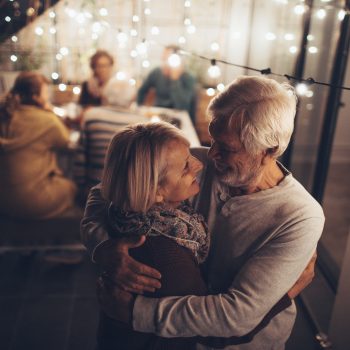A woman has many representations. Nothing like the female body has been interpreted, represented and symbolized during historical periods, generating models that have gradually become popular and then become fashionable. Society asks women to appear in a certain way, outlining a sort of “ideal” body whose paradigm is constantly changing and writing a complex story that passes through art and fashion but also through mental illness and psychological suffering. We talk about this issue with Dr. Agnese Rossi, psychotherapist at Humanitas Gavazzeni.
The curves of the Venus of Willendorf
Thousands of years ago, sculptures and works of art represented sinuous and curved shapes. Some of the first known representations of a woman’s body are the “figurines of Venus”, small statues depicting bodies of round, pear-shaped women, many of them with large breasts. Among these, the most famous is certainly the “Venus of Willendorf”, found in 1908 in Willendorf, Austria. The artists continued to portray the “ideal” woman as formidable and voluptuous until the 17th and 18th centuries.
“Gibson Girl” of the late nineteenth century: paving the way for thin bodies
In 1890 the American artist Charles Dana Gibson drew images of tall, slender and sensual women. The new female ideal thus became that of the Gibson Girls. Also in art, the representation of female bodies was in continuous evolution, as can be seen in the oil paintings of the French artist Henri Matisse, who shows flexuous and flowing bodies, and in the paintings of the Spanish artist Pablo Picasso, who shows fat and twisted bodies. It remains somewhat unclear what triggered this change, but interest in the subtle bodies has continued to this day.
New ideals and eating disorders
According to some research, since thin female bodies started appearing in magazines in the mid-twenties, young women have started to suffer more from eating disorders. At the same time, from the mid-sixties, feminist organizations pointed out the danger of these new models of the female body, starting a real battle to free the female body from stereotypes. In 1960, the US Food and Drug Administration approved the contraceptive pill. In 1963, women’s rights activist Betty Friedan published her book “The Feminine Mystique. In 1966, the National Organization for Women in the United States was founded.
Have eating disorders really increased due to media influence? “Dietary behavior disorders are very complex pathologies in which psychological, physiological, social and environmental factors interact – explained the specialist – Certainly the media can encourage the internalization of these aesthetic canons by making the relationship with their co-person conflictual and thus trying to modify it as much as possible, triggering an incorrect eating style and inadequate practices for the control of body weight. Food can then become an unpleasant time for sharing and meeting, but an enemy to fight and challenge every day, sometimes with strict rules and superhuman efforts that can give rise to real eating disorders.
The Eighties and the Myth of the Athletic Body
Although the images of thin women continued to spread, in the eighties the emphasis on athletic and tonic body types was accentuated. A symbol for everyone: The top model Naomi Campbell.
Instagram: the worst social media app for young people’s mental health?
Instagram would be able to ruin the mental health of adolescents. This is supported by some recent studies according to which, when children enter adolescence and develop their own identity trying to understand what is socially acceptable and what is not, it is particularly negative that they are continually exposed to idealized body images, portrayed in attractive and unrealistic scenarios.
Finally, a Common Sense Media survey found that more than a quarter of young people active online emphasize their appearance in the photos published, giving great importance to the image in the dynamics of communication.
“The socio-cultural context in which we live greatly influences the way we perceive our bodies and respond more or less consciously to stimuli from the mass media – explained Dr. Rossi – For adolescents above all, the media are an important point of reference in which they reflect and try to find confirmation of the prevailing aesthetic canons, just at the stage of life when the body is undergoing significant change, with changes that are not always easy to accept, and are building their own identity. However, can social media like Instagram really be dangerous for teenagers? “The problem is that the models of extremely thin and threadlike bodies are so idealized, and therefore unattainable for most people, that they create a transient boundary between reality and imagination, as if just a little willpower were enough to achieve these ideals of thinness – added the psychotherapist. The risk for adolescents (in recent years also for young people in later years) is to reduce the ability of a realistic reading of these aesthetic stereotypes and seek in any way to homologate to them, perceiving a negative body image, i.e. a problematic relationship with their body, lived with discomfort and shame, to be hidden if it does not fit into these models and therefore with serious relational problems. These images that the mass media propose (or rather impose in a ruthless way), are immediately linked to beauty, success, acceptance by others and can become a major obstacle in the construction of a healthy perception and acceptance of one’s own body image.
How is a balanced vision to be promoted?
“It is essential to encourage a more critical and objective reading of these insistent and hammering messages in the media, in order to reach a level of awareness that allows everyone, adolescents in particular, to build their own way of giving meaning to their body, its forms and its weight, Respecting its uniqueness and originality – said Rossi – Starting with children, it is important to transmit to our children a less judgmental way of relating to their body, to learn to appropriate their own corporeity understood in its entirety, even if it does not coincide with models of perfection and vary according to the fashions of the moment.
This would allow us to feel good in our skin, just as we feel good in our home, which we feel is our own because it is not regulated only by stereotyped rules imposed from the outside world”.










